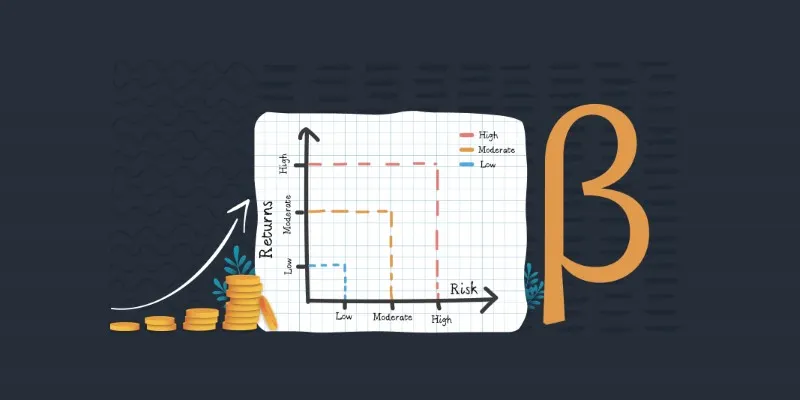Data-Driven Insights: Investment and Rental Property Statistics for 2024
Navigating the real estate market requires strategic consideration and a thorough understanding of various metrics that drive investment success. In 2024, the landscape of investment and rental properties is evolving, influenced by emerging trends and changing economic factors. This comprehensive guide provides insights into market trends analysis, return on investment, property appreciation rates, rental yield calculations, and risk management strategies. Armed with this knowledge, investors can make informed decisions that maximize profitability and mitigate potential risks.
Market Trends Analysis:

In 2024, several market trends are expected to shape the investment and rental property landscape. Understanding these trends can provide a strategic advantage for investors.
- Sustainability and Green Buildings : The growing awareness of environmental impacts is driving more investment in sustainable and energy-efficient properties. Green buildings not only reduce utility costs for tenants but also attract environmentally conscious renters, potentially leading to higher occupancy rates and rents. Investors who integrate sustainability into their properties may benefit from tax incentives and increased property value over time.
- Urbanization and Smart Cities : As more people gravitate towards urban areas, demand for properties in cities offering smart technologies and enhanced connectivity is increasing. These smart cities integrate technology to improve infrastructure, transportation, and living conditions, making them attractive for investors and tenants. Properties within smart cities may see significant appreciation due to the demand for modern, convenient living spaces.
- Remote Work Influence : The continuation of remote work trends is affecting rental property locations, with many individuals opting for larger spaces in suburban or rural areas. This shift is creating increased demand in previously overlooked markets, presenting investors with opportunities to capitalize on these changes. Understanding the needs of remote workers—such as home office spaces and reliable internet connectivity—can give investors an edge in catering to this growing demographic.
- Changing Demographics : An aging population and diverse demographics are influencing the types of housing in demand. Senior living communities and multi-generational housing are becoming more popular as they meet the needs of an evolving demographic landscape. Investors who anticipate and cater to these demographic shifts can leverage market demands and build a resilient portfolio.
Return on Investment (ROI)
Maximizing return on investment is crucial for long-term success in the property sector. Here are some key factors that affect ROI:
- Purchase Price and Financing : The initial cost of acquiring a property and the terms of financing heavily influence ROI. By negotiating a competitive purchase price and securing favorable interest rates, investors can lower entry costs and increase profitability. Understanding the loan-to-value (LTV) ratio and exploring options like fixed or variable interest rates can further optimize financial performance.
- Rental Income : Consistent and substantial rental income significantly contributes to ROI. This depends on setting competitive rental rates, maintaining high occupancy levels, and understanding market demand. Investors can boost rental income by upgrading property features, enhancing amenities, and effectively marketing to attract quality tenants.
- Operating Costs : Operating expenses such as maintenance, property management fees, insurance, and property taxes affect net income and ROI. Investors should regularly review these costs and implement cost-reduction strategies wherever feasible. Consider energy-efficient improvements and preventive maintenance to reduce expenses while ensuring the property’s value is preserved.
- Appreciation : Property appreciation impacts long-term ROI by increasing the asset’s value over time. Investors should focus on areas with strong growth potential, considering factors like economic development, job market strength, and future infrastructure projects. Staying informed on regional housing trends allows investors to capitalize on appreciation opportunities.
Property Appreciation Rates
Property appreciation rates play a crucial role in the profitability of real estate investments by contributing to the growth of asset values over time. These rates are influenced by economic conditions, supply and demand dynamics, and local development projects. Monitoring economic indicators such as GDP growth, employment rates, and inflation can provide insights into potential appreciation trajectories. Additionally, understanding neighborhood and regional market trends is vital, as areas with robust job markets, quality schools, and amenities tend to experience higher appreciation.
Strategic improvements in infrastructure, such as transportation or retail developments, can also enhance property values by making locations more desirable. Investors should conduct thorough due diligence, evaluating historical appreciation trends and forecasting future potential. By aligning investments with areas poised for growth, investors can optimize capital gains, offering significant returns on investment over the long term.
Rental Yield Calculations:
Calculating rental yield is essential for assessing the performance of real estate investments, as it provides insights into the return generated from rental income relative to the property’s cost. Rental yield is typically expressed as a percentage, calculated by dividing the annual rental income by the property’s purchase price (or current market value) and then multiplying by 100.
There are two types of rental yields: gross and net. Gross rental yield does not account for expenses such as property taxes, insurance, and maintenance costs, whereas net rental yield offers a more accurate representation by factoring in these operating costs. Investors can use rental yield to compare the profitability of different properties and determine whether a property is financially viable. A higher rental yield often indicates a better investment opportunity, although it is crucial to consider other factors like location, tenant demand, and property management to make informed investment decisions.
Risk Management Strategies:

Effective risk management in real estate is essential for safeguarding investments against potential threats.
Diversification
Diversification involves spreading investments across different types of properties and geographic locations to reduce exposure to any single risk. By holding a varied portfolio, investors can mitigate the impact of market fluctuations and economic downturns, ensuring more stable returns. Diversifying assets can protect against localized issues, such as natural disasters or economic slumps in a specific area, thus enhancing the resilience of an investment portfolio.
Reserve Funds
Maintaining reserve funds is a prudent strategy to handle unexpected expenses and emergencies like major repairs, vacancies, or economic downturns. Having readily accessible savings allocated specifically for such uncertainties provides financial security and flexibility, allowing investors to address issues promptly without disrupting cash flow. Adequate reserves help cushion cash flow gaps and prevent the need for reactive financing at unfavorable terms.
Insurance Coverage
Securing appropriate insurance coverage shields investments from various risks, including natural disasters, property damage, and liability claims. Comprehensive insurance policies ensure that property owners are financially protected in the event of unforeseen incidents, reducing the potential financial impact on portfolios. It is crucial for investors to regularly review and update insurance policies to reflect any changes in risk exposure or increase coverage in line with property improvements.
Legal Compliance
Understanding and adhering to local regulations and laws is critical in avoiding costly legal challenges and penalties. Staying informed about zoning laws, tenancy rights, and property codes ensures that investments are compliant with jurisdictional requirements. Compliance not only protects against legal disputes but also enhances reputation and tenant relations. Engaging legal consultants can provide expert advice and ensure all ventures adhere to the regulatory framework.
Conclusion
Real estate investing offers significant potential for wealth generation through a combination of rental income, property appreciation, and tax benefits. To maximize returns on investment over the long term, investors must take a strategic approach by carefully selecting properties with strong growth potential while implementing effective risk management strategies. By continually monitoring market trends, conducting thorough due diligence, and adapting to changing conditions, investors can optimize profitability and build a successful real estate portfolio. Thoroughly researching and understanding the factors that influence real estate values is vital to making informed investment decisions and achieving long-term financial success.









